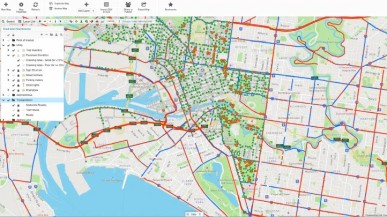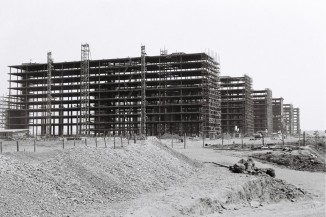Blog / BIM & Construction Management
The power of Open BIM: Enhancing collaboration & efficiency
Categories

Open BIM refers to a universal approach to the collaborative design, realisation, and operation of buildings based on open standards and workflows. This approach is vital for enhancing interoperability and collaboration among different stakeholders.
This article will focus on how Open BIM improves project collaboration and efficiency, providing key insights into its advantages over traditional BIM methods.
Understanding Open BIM
Open BIM is a collaborative process that leverages open standards and workflows.
It ensures interoperability between different software applications and stakeholders.
It also promotes a transparent and open sharing of information across the project lifecycle.
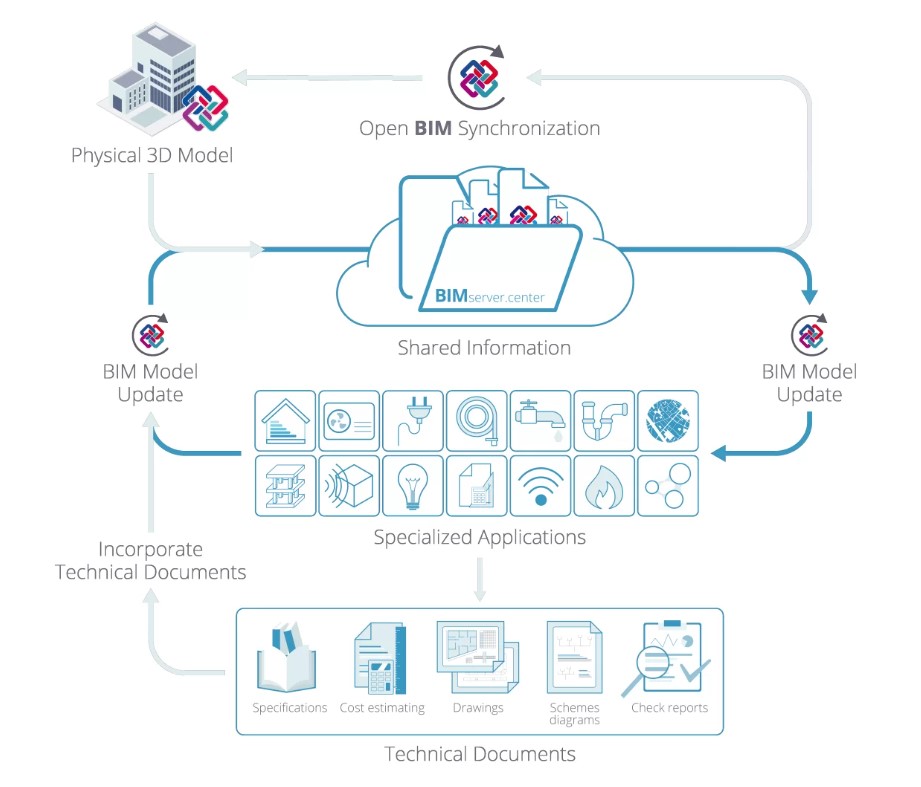
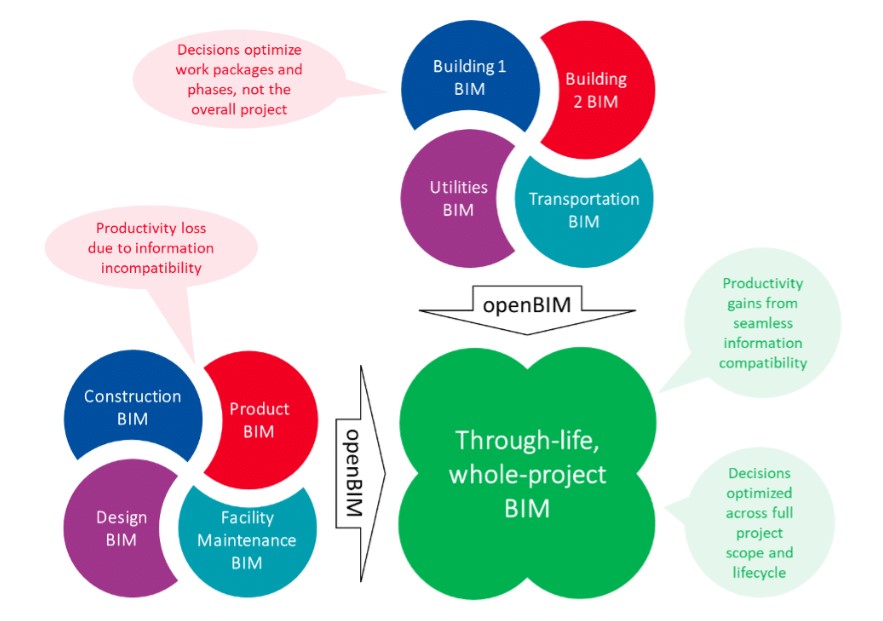
OpenBIM vs. Closed BIM
Closed BIM limits collaboration by requiring the same software, while Open BIM enhances it by using open formats that allow information exchange regardless of the tools used.
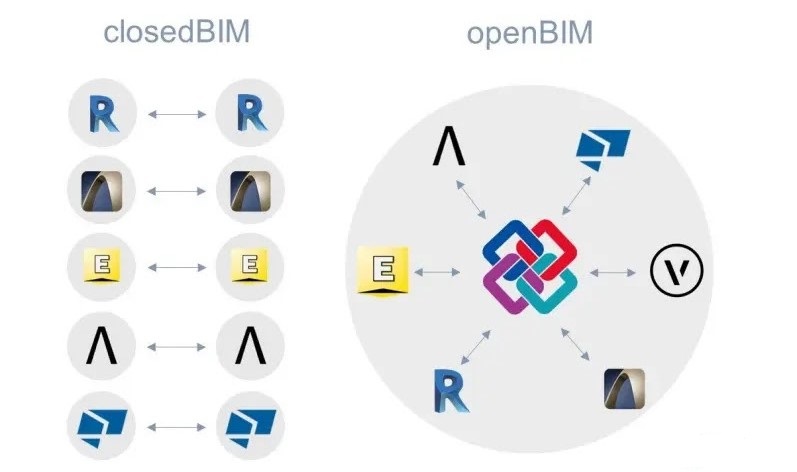

OpenBIM Advantage #1: Enhancing Project Collaboration
Open BIM significantly enhances project collaboration by creating a unified platform where all stakeholders can communicate and share information seamlessly. This collaborative environment is facilitated by the use of Common Data Environments (CDE), which serve as central repositories for project data. CDEs enable all team members to access, update, and share information in real-time, ensuring everyone is on the same page.
One of the primary advantages of Open BIM is the ability to provide real-time updates. When changes are made to the project model, all stakeholders are immediately notified, allowing for instant feedback and adjustments. This real-time access to updated data helps prevent miscommunications and reduces the risk of errors, leading to smoother project execution.
Examples of successful collaboration using Open BIM:
The London Crossrail Project: This massive infrastructure project used Open BIM to manage data from multiple contractors and stakeholders. By using open standards, the project team could integrate and coordinate various design models, ensuring all parties had access to the most current information. This approach led to significant improvements in project coordination and reduced delays.
The Digital Twin of Helsinki: Another compelling example of Open BIM's collaborative power is the Digital Twin project in Helsinki, Finland. The city created a comprehensive 3D model of its entire urban area, using Open BIM standards to ensure data interoperability. This model served as a collaborative platform for city planners, architects, and developers. The result was improved urban planning processes, better public engagement, and more efficient infrastructure development. By leveraging Open BIM, Helsinki has set a new standard for collaborative urban development, demonstrating the transformative potential of this approach.
OpenBIM Advantage #2: Improving Project Efficiency
Open BIM significantly enhances project efficiency by streamlining workflows and breaking down traditional barriers to collaboration. One of the most notable benefits is the reduction of data silos.
In conventional project management, data is often fragmented across different systems and departments, leading to inefficiencies and communication breakdowns. Open BIM's use of open standards ensures that all project data is accessible and interoperable, eliminating these silos and fostering a more cohesive workflow.
Streamlined Workflows and Data Interoperability:
- Unified Data Environment: Open BIM creates a single source of truth for all project information. This means that everyone from architects to construction workers can access the same up-to-date data, reducing misunderstandings and errors.
- Interoperable Data: By using open standards like IFC (Industry Foundation Classes), project data can be easily shared and used across different software platforms. This enhances collaboration and ensures that everyone is working with the most accurate information.
Enhanced Coordination and Clash Detection:
Open BIM tools provide advanced coordination capabilities, such as clash detection. Clash detection helps identify and resolve conflicts between different design elements early in the project, preventing costly rework and delays. This proactive approach ensures that potential issues are addressed before they become major problems, leading to smoother project execution.
Impact on Project Timelines and Cost Savings:
- Faster Project Delivery: With improved data sharing and coordination, project timelines are significantly shortened. Real-time updates and efficient communication reduce the need for lengthy meetings and back-and-forth exchanges.
- Cost Efficiency: By minimising errors and rework, Open BIM helps keep projects within budget. The improved planning and coordination capabilities lead to more accurate cost estimations and resource allocation.
Tools and Technologies Supporting Open BIM:
Several tools and technologies are pivotal in implementing Open BIM. Software like Revit, Archicad, and Bentley Systems support Open BIM standards, offering robust features for design, modelling, and collaboration.
Revit: Known for its comprehensive modelling capabilities, Revit supports IFC and other open standards, enabling seamless data exchange.
Archicad: This software is designed with Open BIM principles in mind, offering powerful tools for collaborative design and data sharing.
Bentley Systems: Bentley’s suite of products supports Open BIM through advanced modelling and project management tools that enhance interoperability and efficiency.
OpenBIM real-world example: The Sydney Opera House Renovation
The Sydney Opera House, one of the most iconic buildings in the world, underwent a major renovation to update its facilities while preserving its historic architecture. Open BIM played a crucial role in enhancing collaboration and efficiency throughout this complex project.

Key Ways Open BIM Was Used:
- Unified Data Environment
-Implemented a Common Data Environment (CDE) to centralize all project data.
-Allowed architects, engineers, and construction teams to access and update information in real-time. - Interoperable Models
-Used Industry Foundation Classes (IFC) to ensure seamless data exchange between different software platforms.
-Enabled integration of architectural, structural, and MEP (mechanical, electrical, plumbing) models. - Clash Detection
-Used advanced clash detection tools to identify and resolve conflicts early in the design phase.
-Reduced rework and prevented costly on-site errors. - Enhanced Coordination
-Facilitated better communication among stakeholders through shared 3D models.
-Conducted virtual walkthroughs and design reviews, ensuring everyone had a clear understanding of the project scope and progress. - Cost and Time Efficiency
-Improved planning and scheduling, leading to more accurate cost estimates and resource allocation.
-Reduced construction time by enabling more efficient workflows and coordination.
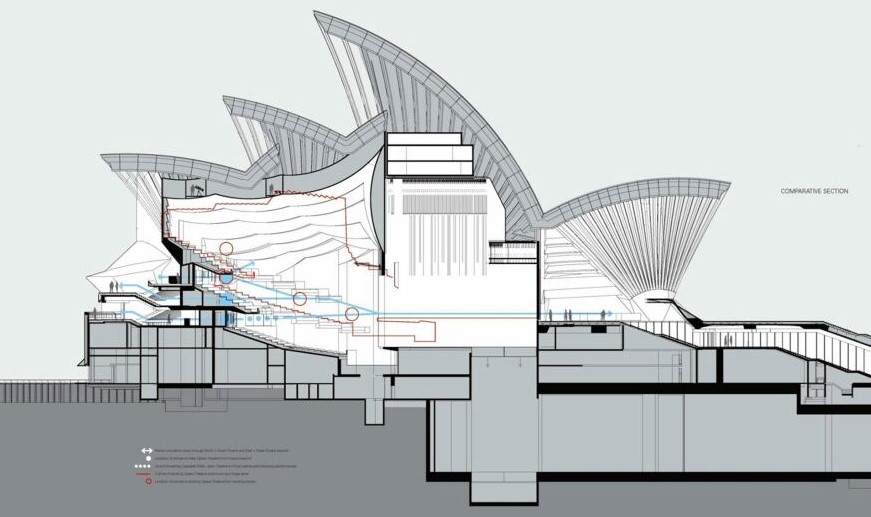
Results:
- Enhanced Collaboration: Open BIM allowed for seamless communication and collaboration among diverse teams, leading to a more cohesive and efficient project execution.
- Efficiency Gains: The use of Open BIM resulted in significant time and cost savings, ensuring the project was completed on schedule and within budget.
- Preservation of Heritage: The technology enabled precise planning and execution, ensuring the integrity of the historic structure was maintained.
Learn to apply OpenBIM with a BIM Master
Mastering OpenBIM is essential for fostering interoperability and collaboration across various software platforms. It ensures seamless data exchange, promotes efficiency, accuracy, and alignment with industry standards, reduces errors, and prepares professionals for future advancements. This expertise empowers users to manage complex projects effectively, driving innovation and quality in construction and design.
Our BIM Master prepares graduates to lead international projects, ensuring they can navigate and unify diverse systems and standards globally. This global perspective is essential for achieving successful project outcomes in a connected world.

Related module



